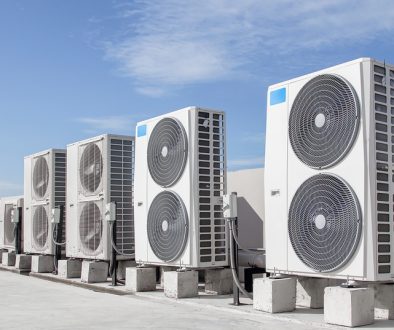Cooling as a Service: what is it? Can It work?
CaaS, or Cooling as a Service, is a new business model for the refrigeration industry, based on servitization: it represents a revolutionary approach, offering clients not just a simple product, but an all-round service designed to relieve them of the need to carry out certain tasks.
With this solution, rather than purchasing an air-conditioning unit or freezer, the end user just pays a fixed monthly rate. The provider continues to own the apparatus and any systems installed, taking on responsibility for all aspects of installation, maintenance and updating.
How the CaaS model originated
The drive towards revolutionising the refrigeration business began with the need to facilitate the spread of equipment and technologies which are as efficient as they are sustainable. These high-performing systemss, despite their many advantages, require much higher levels of investment compared to those solutions which have already been on the market for several years.
In addition to the significant initial costs, the average user is often reluctant to invest in latest generation products. The reason for this is connected with mistrust of something new and unknown and not yet widely used and the fear that its promised advantages may turn out to be a mere marketing campaign.
What the general public often don’t realise however, is that the initial investment amounts to only 10% of total expenditure during the lifecycle of the air-conditioning or refrigeration equipment. The remaining 90% consists of operational costs, mainly related to maintenance and energy consumption.
It is therefore clear then that, despite the high purchase price, the return on investment (ROI) guaranteed by innovative technological products is greater compared to that provided by less up-to-date apparatus.
In a context in which safeguarding the climate depends to a large degree on the performance of the equipment used and widespread scepticism of end users towards such apparatus, Caas represents an ideal compromise designed to eliminate purchase and maintenance costs, while offering a complete and reasonably-priced service package.
The advantages of Cooling as a Service and its impact on sustainability
The CaaS model provides attractive advantages for both the client and the provider:
- As mentioned above, the client no longer needs to worry about expenses relating to the purchase, installation and maintenance of the air-conditioning or refrigeration equipment; all they need do is pay regular instalments for the ‘amount of cold’ actually used (all costs relating to electricity and water are also included in the price).
- The provider meanwhile, is free to offer the best available technology, in order to reduce operational costs. They can also install heat recovery systems and sell heating or cooling systems to interested users. This means that the cost of expanding the service is negligible and is therefore a source of increased earnings.
The CaaS model (ideal for helping the refrigeration sector become more sustainable, less polluting and better able to exploit low GWP refrigerants fully) matches providers’ needs, as they must limit expenses by choosing new generation equipment with greater energy efficiency.
Cooling as a Service is currently in an experimental phase in several Asian states with excellent results, especially where energy costs are high. Negotiations are also underway with some European countries, where this business model is expected to be introduced in businesses and factories in the near future.
Translated by Joanne Beckwith







